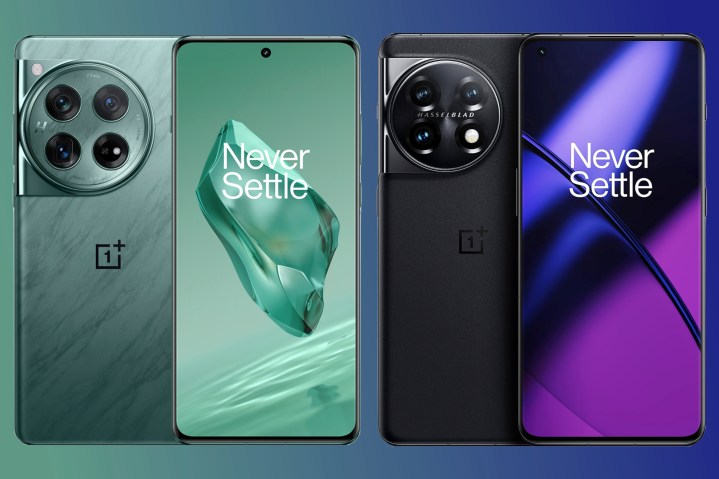
Earlier this month, enthusiast brand OnePlus announced the OnePlus 12 — a new flagship for 2024 that builds on its success with the OnePlus 11, which came to the U.S. earlier this year.
- OnePlus 12 vs. OnePlus 11: specs
- OnePlus 12 vs. OnePlus 11: design
- OnePlus 12 vs. OnePlus 11: display
- OnePlus 12 vs. OnePlus 11: performance
- OnePlus 12 vs. OnePlus 11: battery and charging
- OnePlus 12 vs. OnePlus 11: cameras
- OnePlus 12 vs. OnePlus 11: software and updates
- OnePlus 12 vs. OnePlus 11: price and availability
- OnePlus 12 vs. OnePlus 11: verdict
The OnePlus 11 impressed us with a true return to form for the brand, which we’d feared had lost its way after the middling OnePlus 10T release in the summer of 2022. With a refreshing and attractive new design combined with a top-notch camera system, cutting-edge CPU, and a much better software experience, it’s fair to say the OnePlus 11 rescued the brand — and it still holds its own even in late 2023.
That’s not to say there aren’t better options to spend your money on today, which is why the OnePlus 12 is an essential new entry. While it’s not yet available in the U.S. — it launched exclusively in China earlier this month — it’s expected to come to our shores in early 2024, and it could be a phone worth waiting for.
However, after some missteps in the past, OnePlus fans may be wary about whether the company will follow in the footsteps of the brilliant OnePlus 11 or try to take its newer model into uncharted waters. Let’s take a look and see how OnePlus’ latest entry shapes up.
OnePlus 12 vs. OnePlus 11: specs
| OnePlus 12 | OnePlus 11 | |
|---|---|---|
| Size | 164.3 x 75.8 x 9.2mm | 163.1 x 74.1 x 8.53mm |
| Weight | 220 grams | 205 grams |
| Screen |
|
|
| Operating system | Android 14, OxygenOS 14 (expected) | Android 13, OxygenOS 13 (upgradeable to Android 14, OxygenOS 14) |
| RAM & Storage |
|
|
| Processor | Qualcomm Snapdragon 8 Gen 3 | Qualcomm Snapdragon 8 Gen 2 |
| Camera |
|
|
| Video |
|
|
| Connectivity |
|
|
| Ports | USB-C Gen 3.2 | USB-C Gen 3.2 |
| Water resistance | IP65 | IP64 |
| Battery & charging | 5,400mAh with 100W SupeVOOC wired fast charging 50W wireless charging 10W reverse wireless charging |
5,000mAh
100W SupeVOOC wired fast charging |
| Colors | Black, silver, green | Titan Black, Eternal Green, Jupiter Rock (China only), Marble Odyssey (India only) |
| Price | Starting at 4,299 yuen ($605) | Starting at $699 |
OnePlus 12 vs. OnePlus 11: design
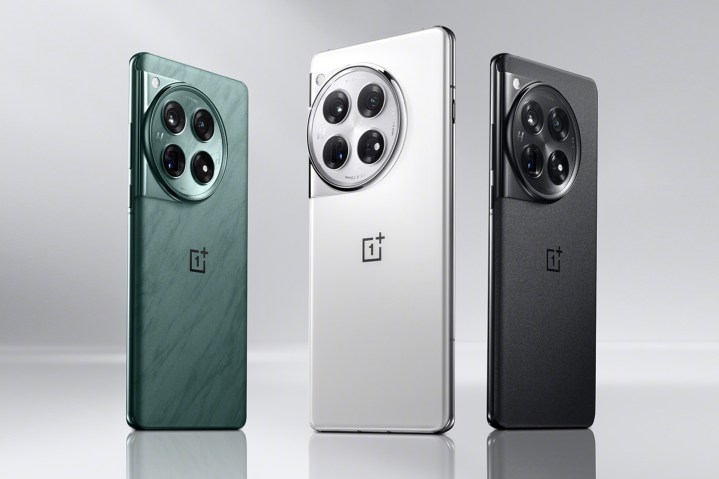
OnePlus has an iconic design language of its own, and it’s done an excellent job of preserving the basics over the years while improving on them in some unique and interesting ways. For instance, the OnePlus 11 went in a radical and fun new direction with its camera array, eschewing the traditional square bump of prior models for a circular system that was elegant enough to deserve the name “Hasselblad” stamped on it.
However, even with that change, the OnePlus 11 remained unmistakably a OnePlus device, thanks in part to its classic glossy green finish — “Eternal Green” in this case — and svelte edges. Unsurprisingly, the OnePlus 12 retains that design and changes even less from its predecessor. After all, why argue with success?
Since the OnePlus 12 has yet to be released outside of China, we’re not sure what the official color names will be, but it’s currently available in the typical green and black finishes, plus a new white color. However, we wouldn’t recommend holding your breath on that last one making it to the U.S.; the OnePlus 10 Pro came in a “Panda White” colorway that remained exclusive to China. The OnePlus 11 also got an exclusive Jupiter Rock Edition in China, which eventually also came to India as the Marble Odyssey Edition, but neither one was available outside of those two countries.
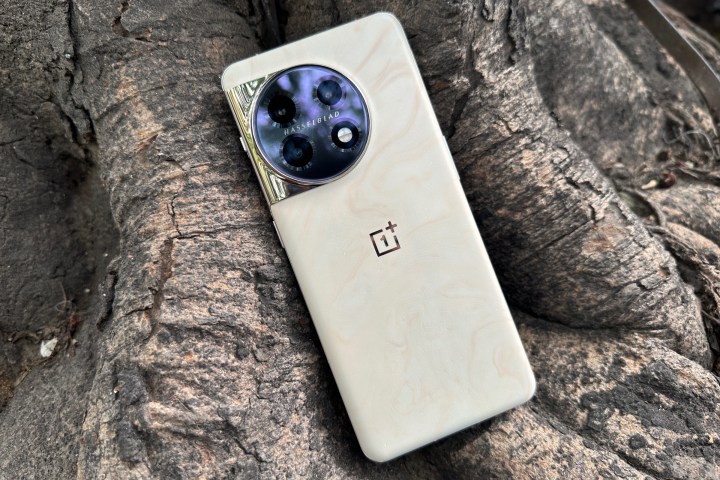
So, expect the U.S. OnePlus 12 to sport the traditional green and black colors, although the green is noticeably darker with a gorgeous two-tone marbled look seemingly inspired by the Marble Odyssey Edition of the OnePlus 11.
Beyond that, the OnePlus 12 looks remarkably similar to its predecessor, to the point where you may have a hard time telling them apart at first glance. The new model is slightly larger, but only by about 1 to 2mm in each direction. That means it won’t fit existing OnePlus 11 cases, but it’s not something you’ll notice unless you put the two side-by-side.
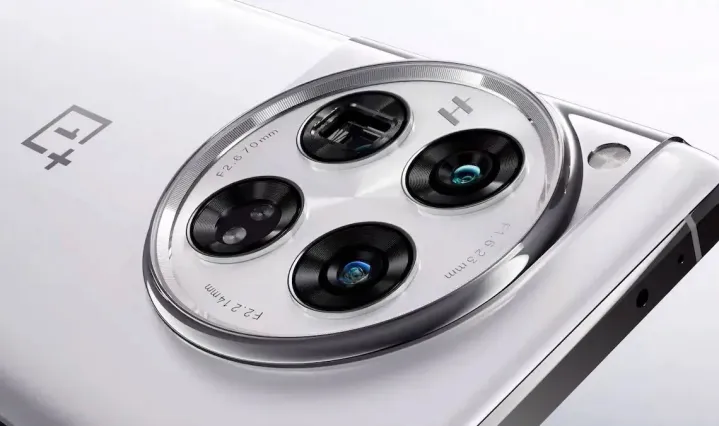
The camera module features the most visually apparent changes, with the full Hasselblad branding reduced to the stylized “H” introduced on the OnePlus Open. The camera array has also been refined for a slightly classier look, with a metal ring around the outside that gives it a watch-like appearance. It’s also now color-matched to whatever finish you choose.
In a rather unusual twist, OnePlus has decided to swap the volume buttons and alert slider on the new model, moving the volume buttons to the right edge alongside the power button and the alert slider onto the left side. Existing users will have to adjust, but we give kudos to OnePlus for sticking with the alert slider after its removal in the OnePlus 10T.
Lastly, the OnePlus 12 gets a few extra points for durability, with an IP65 rating and Gorilla Glass Victus 2 on the screen. While those are modest improvements over the IP64 and Gorilla Glass Victus of the OnePlus 11, they still fall behind the IP68 rating of most modern flagship smartphones, offering protection against splashes and sprays but not immersion in water. The back glass on both also still appears to be Gorilla Glass 5.
Nevertheless, even a slight improvement is still a bonus, and combined with the refined design, the OnePlus 12 does edge out the OnePlus 11 in this category.
OnePlus 12 vs. OnePlus 11: display

The OnePlus 11 already has a sizeable screen at 6.7 inches, but the OnePlus 12 takes this up a notch as well, boosting the size to 6.82 inches with a 3168 x 1440-pixel resolution. That’s a slight drop in resolution from the OnePlus 11’s 3216 x 1440 maximum, resulting in a slightly lower density of 510 pixels per inch (ppi) versus 525 ppi on the OnePlus 11. However, those are impressively high ppi numbers either way, and nobody will notice the difference with the naked eye.
The OnePlus 12 uses a similar AMOLED LTPO 120Hz panel with an adaptive refresh rate that can go as low as 1Hz for always-on display mode, but it packs in a few other nice enhancements, including an eyeball-searing 4,500 nits of peak brightness and support for 2,160Hz pulse-width modulation (PWM) dimming to help reduce eye strain and headaches.
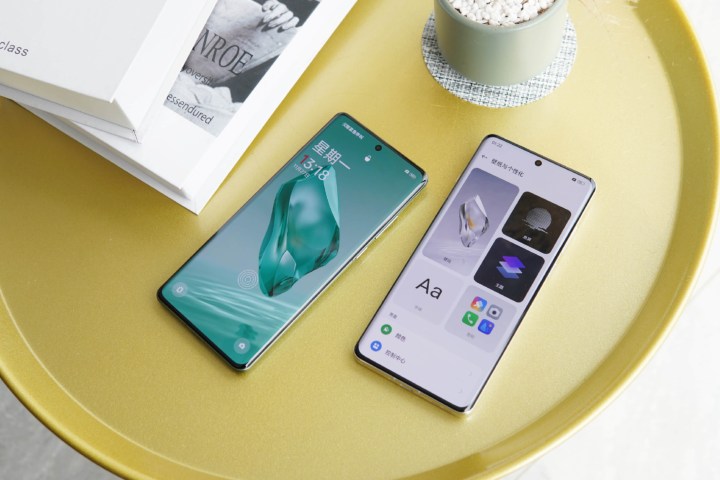
That’s exceptionally high and a huge bonus for folks sensitive to OLED screens’ flickering. By comparison, the OnePlus 11 has a PWM frequency of 360Hz that’s more typical for modern smartphones; it’s right in the middle between Samsung’s 240Hz PWM screens and the 480Hz used on Apple’s iPhone displays.
While the 4,500-nit peak brightness on the OnePlus 12 is much higher than the OnePlus 11’s 1,300 nits, those numbers only apply when viewing HDR content. Both OnePlus phones support Dolby Vision and HDR10+, and the OnePlus 12 offers 600 nits of typical brightness and 1,600 nits in high brightness mode (HBM) versus 500 nits and 1,800 nits on the OnePlus 11.
OnePlus 12 vs. OnePlus 11: performance
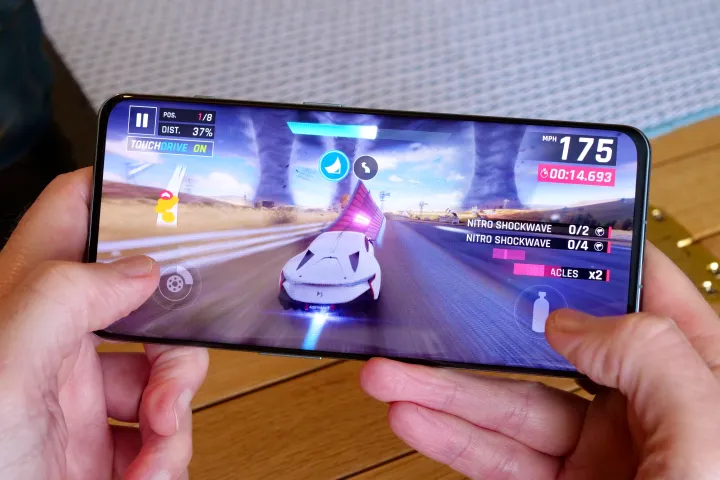
The OnePlus 11 impressed us last year by packing in the latest (at the time) Snapdragon 8 Gen 2 chip, so it’s probably not a big surprise that the OnePlus 12 has adopted the new Snapdragon 8 Gen 3.
This makes it among the first phones to adopt the new chipset — and it could be the first to come to the U.S., depending on whether OnePlus’ international release can get here before Samsung announces its Galaxy S24 lineup.
The Snapdragon 8 Gen 3 provides significant performance improvements in mobile gaming, plus generative AI and other machine learning capabilities that could give Google’s Tensor chips a run for their money. We’ll have to wait to see how that stacks up in the real world, but the OnePlus 11 was never a slouch, so it’s a safe bet the OnePlus 12 will have power to spare.
The base model of the OnePlus 12 also now starts at 256GB of storage and 12GB of RAM and runs all the way up to a 1TB/24GB version, exceeding the maximum 512GB/16GB configuration of the OnePlus 11 that was capable of running up to 44 apps in the background. We expect the top-tier OnePlus 12 to do even better based on the extra RAM.
OnePlus 12 vs. OnePlus 11: battery and charging
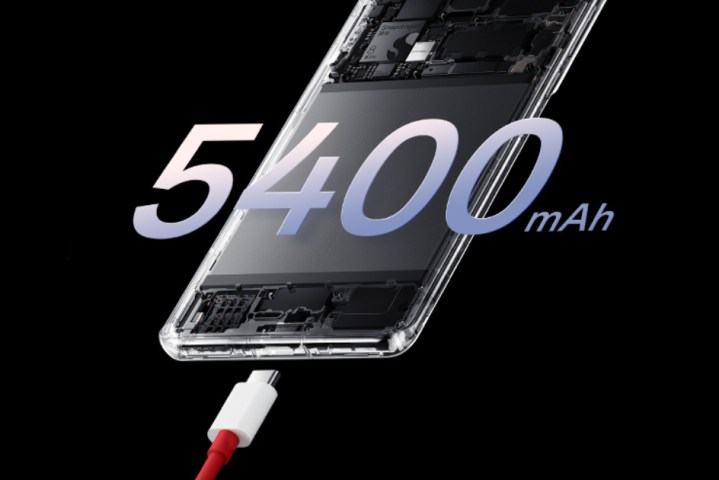
The OnePlus 12 has a 5,400mAh battery inside, slightly larger than the 5,000mAh cell on the OnePlus 11. Whether that will offer noticeably longer battery life will depend on how efficient the new Snapdragon 8 Gen 3 chip is, but we expect it should at least deliver the same effortless full-day battery life that can easily be pushed to two days with moderate use.
As one might expect from OnePlus, both phones also give you some of the fastest wired charging speeds available on any smartphone — up to 100W on the current Chinese versions that can juice up the battery from dead to full in about 26 minutes. However, the OnePlus 11 limited that to 80 watts in the U.S., so we imagine the OnePlus 12 will be the same when it arrives here early next year. Nevertheless, the extra 20W doesn’t make that much of a difference in overall charging speeds.
However, the biggest bonus of the OnePlus 12 is the return of wireless charging. After being conspicuously omitted in the OnePlus 11, the latest model brings it back with a vengeance, delivering the same high-speed 50W wireless charging as the OnePlus 10 Pro.
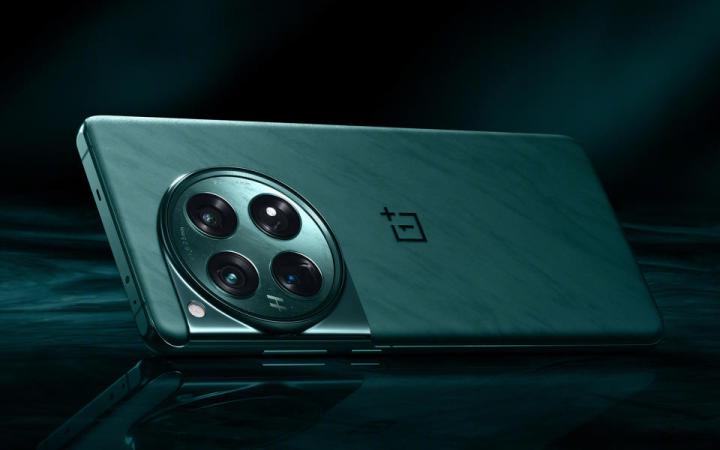
That puts it among the fastest wireless charging speeds you’ll find on any smartphone sold in the U.S., although you’ll need OnePlus’ AirVOOC 50W wireless charger to get there, although the older Warp Charge 50 stand from the OnePlus 9 Pro will also work if you’re upgrading. That will get you from zero to 100 in just under an hour when using wireless charging. Otherwise, the OnePlus 12 will likely only draw 15W from a standard Qi charger.
Lastly, the OnePlus 12 also includes 10W reverse wireless charging, so you can pop a set of earbuds or other low-power electronic device on the back to juice them up in a pinch.
While the battery and wired charging specs are essentially the same between both models, the high-speed wireless charging and reverse wireless charging make the OnePlus 12 a clear winner here.
OnePlus 12 vs. OnePlus 11: cameras
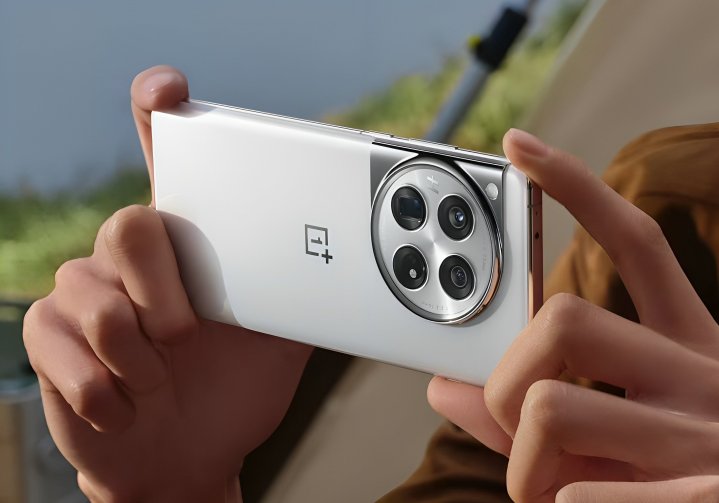
OnePlus’ flagship phones have made a name for themselves thanks to the company’s partnership with Hasselblad, which provides the tuning algorithms to process the images captured with the camera for ideal color balance and saturation.
While early attempts were interesting, the results didn’t get exciting until the OnePlus 11 came along. Whatever OnePlus and Hasselblad did here produced incredible results, and there’s every chance they’ll be at least as good on the OnePlus 12, if not better, but we’ll have to wait for some real-world shots to see for ourselves.

Where the OnePlus 11 falls down is in close-up and telephoto photography. The 32-megapixel (MP) telephoto camera has a short 2x optical zoom designed primarily for capturing portrait mode shots — OnePlus calls it a “portrait tele lens.” It does these exceedingly well as it’s Hasselblad-tuned to match bokeh portraits from XCD 30mm and 65mm camera lenses. However, it doesn’t hold its own for distance photography. The 2x zoom is merely acceptable in those situations, and pushing it beyond that takes you into digital zoom territory that’s not recommended for anyone who cares about quality photos.
Thankfully, the OnePlus 12 addresses most of those shortcomings, with a 50MP primary sensor joined by a 64MP periscope lens that delivers a 3x optical zoom that we expect will be much better. At the very least, it’s closer to the optical zoom levels on other flagship smartphones. Add in the 48MP ultrawide camera, and you’re basically looking at the same system used by the OnePlus Open foldable, so we expect similar results.
OnePlus 12 vs. OnePlus 11: software and updates
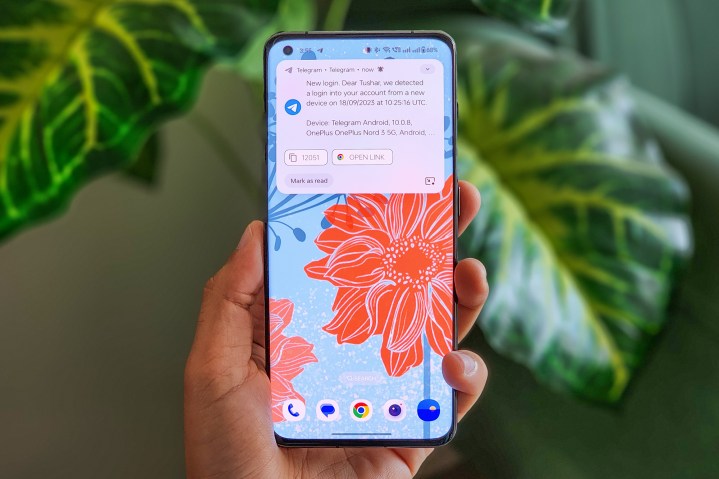
The OnePlus 11 shipped with Android 13 and OxygenOS 13 layered on top, at least in the U.S.; the China version still runs Oppo’s ColorOS. It’s since been updated to Android 14 and OxygenOS 14, which is likely what will arrive on the OnePlus 12 when it lands stateside.
While OxygenOS hasn’t been everyone’s cup of tea, it’s what you’ll get if you’re a OnePlus fan, and the good news is that it seems to have been going in the right direction. OxygenOS 13 was a remarkable improvement over OxygenOS 12, although OxygenOS 14 is a more modest update.
Nevertheless, with both phones running the same operating system, you can expect the same user experience. OnePlus has committed to four years of updates for its flagship phones, which will keep them in lockstep for three more years, after which the OnePlus 12 will pull ahead with OxygenOS 18 while the OnePlus 11 gets left behind on OxygenOS 17. That gives the newer model a slight edge over its predecessor.
OnePlus 12 vs. OnePlus 11: price and availability

The OnePlus 12 isn’t yet available outside of China, where it starts at 4,299 yuan (approximately $605) for the base 12GB/256GB model and goes up to 5,799 yuan (roughly $815) for the top-tier 24GB/1TB variant. The actual U.S. prices will almost certainly be higher than the exchange rates when it launches next year. Still, with OnePlus’ pricing history, it’s difficult to predict whether it will launch at the same price points as the OnePlus 11 or use the upgrades to justify a price increase.
After all, the OnePlus 11 came to the U.S. at $699 for the 8GB/128GB model — a configuration unavailable on the OnePlus 12. The 16GB/256GB version sells for $799.
The other catch is that OnePlus only sells the Eternal Green color in the higher capacity, so you’ll be stuck with Titan Black if you want the $699 model. It’s unclear if the OnePlus 12 will follow suit, nor can we be sure what storage and RAM configurations will make it to the U.S. The OnePlus 11 has 12GB/256GB and 16GB/512GB configurations sold only in China, so the most powerful 24GB/1TB model may not even show up here.
OnePlus 12 vs. OnePlus 11: verdict

So, with everything the OnePlus 12 has to offer, is it worth waiting for it to arrive next year? We think the short answer is yes.
The OnePlus 12 features a bleeding-edge processor and what’s likely to be a significantly better camera system. You’ll also get an extra year of OxygenOS and Android updates, plus the fastest wireless charging you’ll find on any smartphone this side of the pond.
However, the OnePlus 11 is still a powerful and capable flagship phone, thanks to its Snapdragon 8 Gen 2. It’s powerful enough to handle anything you can throw at it, plus it has a capable camera system that delivers stunning portrait photos as long as you’re not looking for a powerful zoom lens. It’s not a bad choice for those who may be hesitant to splurge on the OnePlus 12, which will likely sell for a higher price. Even if you’re still eyeballing a OnePlus 11, it’s worth waiting a bit if you can, as that model will undoubtedly see some deeper discounts once its successor arrives.
Editors' Recommendations
- The best Android tablets in 2024: the 11 best ones you can buy
- The OnePlus 12R is still one of 2024’s best smartphone deals
- Every Android tablet we’re expecting in 2024
- I did a OnePlus 12 vs. OnePlus 12R camera test, and there’s a big difference
- OnePlus’ next foldable phone may get a huge camera upgrade



